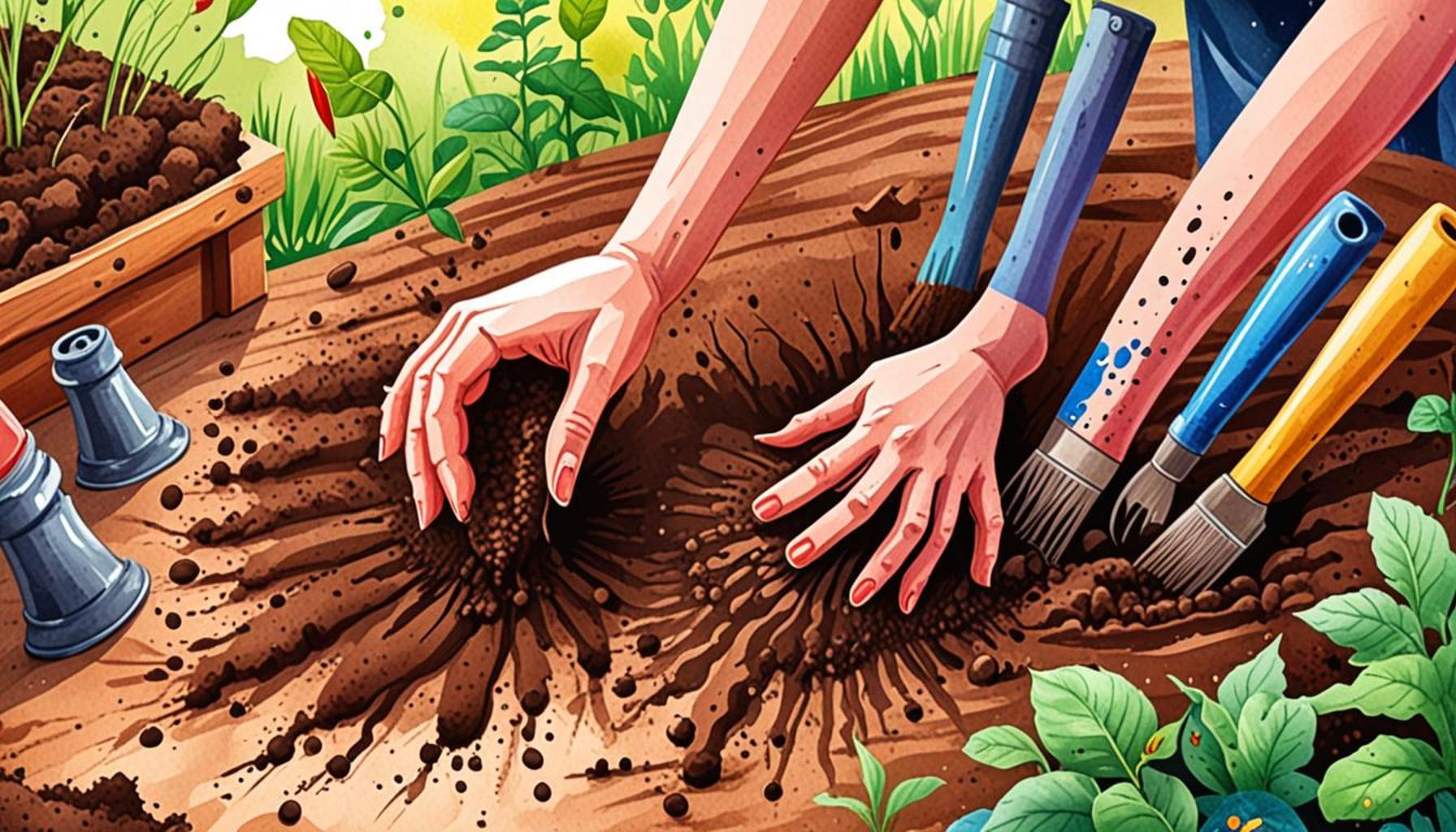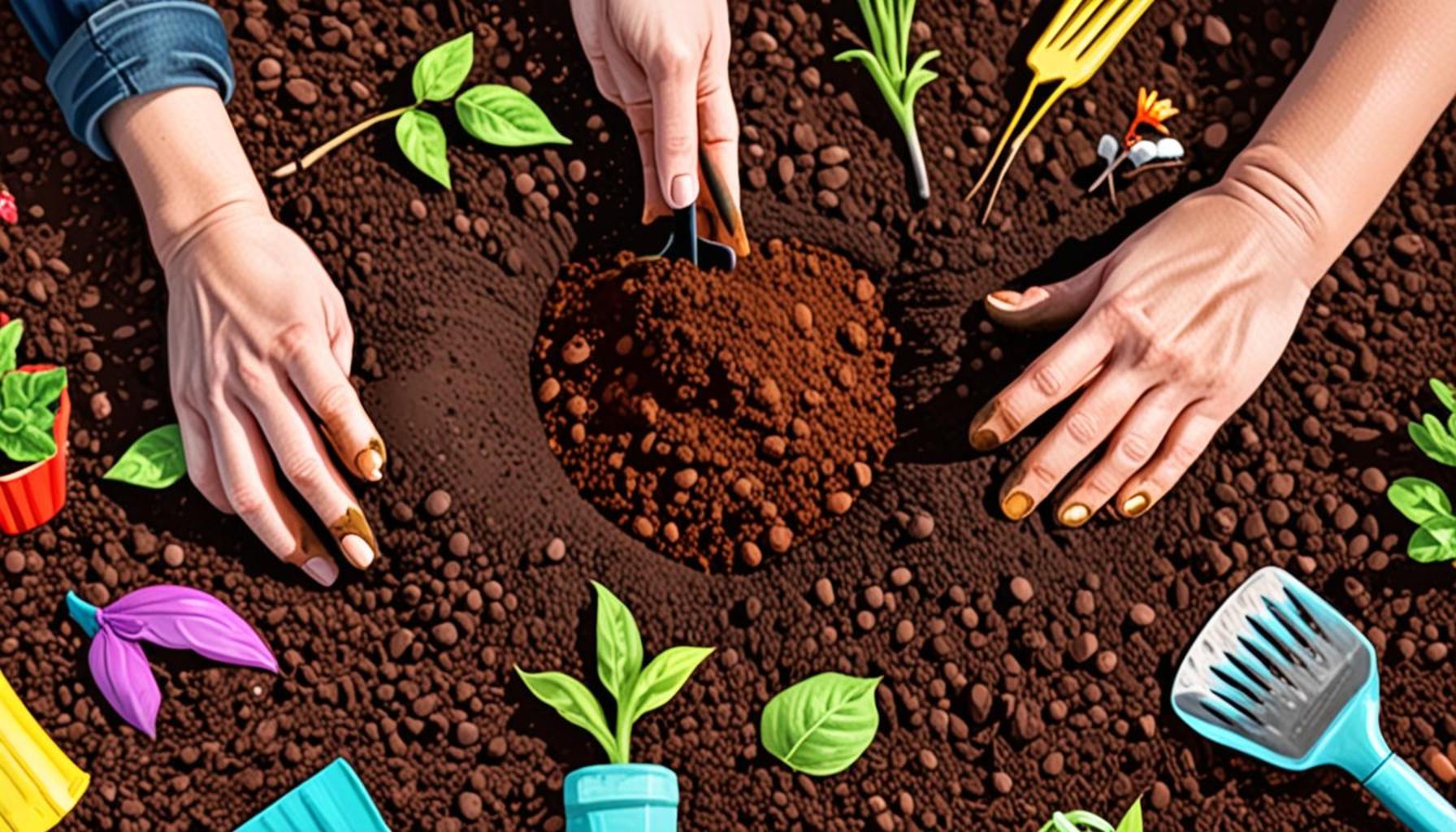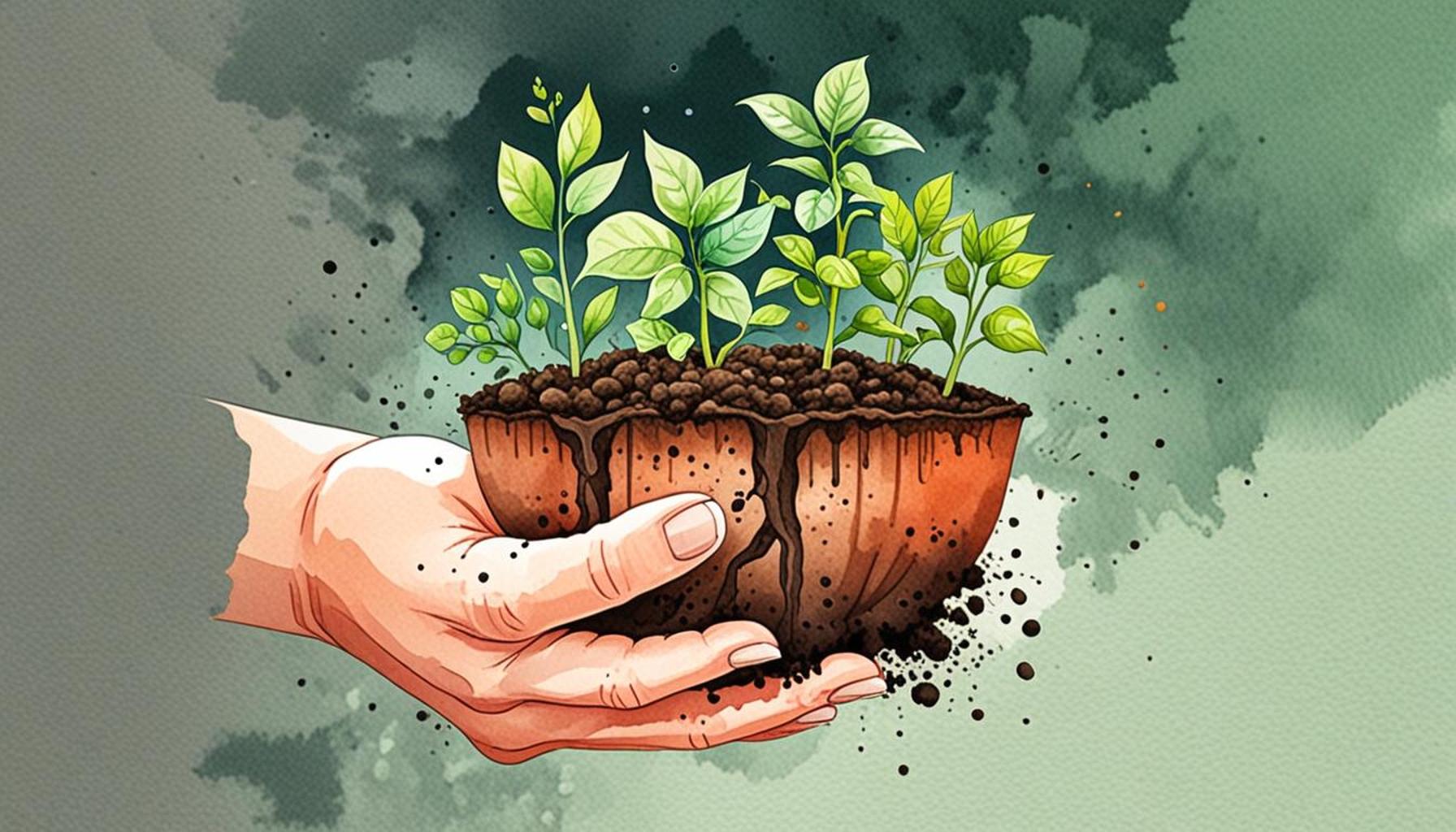How to Test and Improve Soil Quality for Your Home Garden

The Importance of Soil in Gardening
Creating a thriving home garden starts with understanding your soil. Soil quality plays a crucial role in your plants’ health and productivity. Poor soil can lead to stunted growth, disease, and even plant death, while healthy soil can significantly boost your garden’s yield and resilience against pests. As any seasoned gardener will tell you, the secret to a flourishing garden is in the ground beneath your feet.
Testing your soil quality might seem daunting, but it involves simple steps that anyone can undertake. Here are the vital components you need to consider:
- pH Levels: The pH scale runs from 0 to 14, with 7 being neutral. Most garden plants prefer slightly acidic to neutral soil (pH 6 to 7). Knowing the acidity or alkalinity of your soil helps determine which plants will flourish. For instance, blueberries thrive in lower pH conditions, while lavender prefers more alkaline soils.
- Nutrient Content: Essential nutrients like nitrogen, phosphorus, and potassium—often referred to as N-P-K—dictate your soil’s fertility. Nitrogen is vital for leafy growth, phosphorus encourages root and flower development, and potassium is essential for overall plant health. Conducting a soil test will reveal the availability of these nutrients and whether you need to amend your soil.
- Texture and Structure: Soil texture refers to the proportions of sand, silt, and clay within it. Sandy soils drain quickly but may require more frequent watering, while clay retains moisture but can lead to waterlogging. Understanding your soil’s texture helps you manage drainage and moisture retention effectively.
Improving Soil Quality
Once you’ve assessed your soil, improving its quality could be the game-changer for your plants. Here are some proactive methods to consider:
- Adding Organic Matter: Incorporating compost or well-rotted manure not only enriches soil with necessary nutrients but also enhances its structure, leading to improved drainage and aeration. A good rule of thumb is to add at least two to three inches of organic material to your garden beds annually.
- Using Cover Crops: Planting cover crops, such as clover or rye, during the off-season can significantly enhance soil quality. These crops prevent erosion, suppress weeds, and help to fix nitrogen in the soil, naturally enriching it and making it more fertile when you prepare for planting in the spring.
- Implementing Crop Rotation: This practice is not just an old wives’ tale; crop rotation prevents nutrient depletion and reduces pest build-up by interrupting the life cycles of harmful insects and diseases. For example, following heavy-feeding crops like tomatoes with legumes can replenish nitrogen levels in the soil.
By taking the time to assess and enhance your soil, you lay down a solid foundation for a flourishing garden. In this journey towards garden success, effective soil management can lead to more robust plants, higher yields, and an overall more enjoyable gardening experience. Dive into the practical steps and enrich your gardening knowledge to explore the promising possibilities that lie within your soil!
DISCOVER MORE: Click here to learn about the best harvesting techniques
Understanding Soil Testing
Soil is often dubbed the unsung hero of gardening. It is the foundation upon which plants grow, absorb nutrients, and flourish. To transform your garden from a source of frustration into a bounty of beauty and productivity, beginning with accurate soil testing is essential. This process empowers you with knowledge about your soil’s health, allowing you to make informed decisions on how to care for it effectively.
So, how do you embark on the adventure of soil testing? Here’s your guide to getting started:
- Collecting Samples: First, arm yourself with a clean container and a trowel. When collecting soil samples, aim for various spots in your garden—around five to ten different locations—to ensure a comprehensive analysis. Dig down about six to eight inches, as that’s the depth where most essential roots lay. Mix these samples thoroughly before taking roughly one to two cups for testing. This average will yield insights that reflect the overall condition of your garden soil, rather than just isolated patches.
- Testing Methods: You have two primary pathways for testing: sending your sample to a local university extension office or employing a DIY soil testing kit. The latter is typically affordable and readily available at garden stores, often including color-coded charts for quick pH and nutrient assessments. Professional tests, while potentially more expensive, can furnish detailed analyses and tailored recommendations for your garden’s unique soil needs. Consider this approach if you suspect significant issues or are preparing for a major gardening project.
- Interpreting Results: After receiving your results, the next step is deciphering what they mean. Pay particular attention to soil pH, which should ideally fall between 6.0 and 7.5 for most crops. If your pH sits below this range, you can adjust it with lime; if it is too high, sulfur can help lower it. Besides pH, look for key nutrients such as nitrogen, phosphorus, and potassium—the holy trinity of plant nutrition. Understanding these levels will empower you to apply the right fertilizers and amendments.
Essential Soil Characteristics
While pH and nutrient content are paramount, recognizing additional essential characteristics of your soil is just as critical. These aspects can have a profound impact on plant growth and overall garden success.
- Organic Matter Content: Healthy soil teems with organic matter—an essential component that enhances soil structure, aids in moisture retention, and promotes nutrient availability. Consider integrating compost or well-rotted manure into your soil to boost this organic content. A rich organic profile not only nourishes plants but supports beneficial microorganisms, fostering a thriving ecosystem.
- Soil Compaction: Compacted soil can be detrimental, suffocating roots and obstructing water flow. You can quickly assess compaction by probing your soil with a garden fork. If you struggle to penetrate the soil, it’s likely compacted. Aeration can be a simple yet effective remedy, breaking up clumps and allowing vital air and water to reach plant roots.
- Moisture Retention: Understanding how your soil retains water is crucial for effective watering practices. Sandy soils, while great for drainage, tend to dry out quickly, requiring more frequent watering. Conversely, clay soils can become waterlogged, so adjusting your watering schedule is vital based on this characteristic to promote healthier plant growth.
By delving into these critical aspects through soil testing, you’re laying the groundwork for informed gardening decisions. A comprehensive understanding of your soil’s strengths and weaknesses is key to implementing tailored strategies that promote vibrant plant health and productive harvests. With the right information at hand, your journey toward a flourishing garden will become not only achievable but also immensely rewarding.
| Category 1 | Category 2 |
|---|---|
| Soil pH Testing | Determines the acidity or alkalinity of the soil, impacting nutrient availability. |
| Nutrient Content Analysis | Identifies the levels of essential nutrients such as nitrogen, phosphorus, and potassium. |
| Soil Texture Classification | Understanding soil components helps in choosing the right plants and amendments. |
| Organic Matter Assessment | Increased organic matter enhances soil structure and moisture retention. |
When aiming for a thriving garden, the discernment of soil quality is absolutely crucial. The first step involves rigorous testing, with soil pH being a primary concern. The pH level influences the availability of nutrients, making it a cornerstone of successful gardening. Testing kits can be bought at local gardening stores or can even be sent to a lab for more comprehensive analysis.Next, understanding nutrient content is key. Every plant has unique nutrient requirements; thus, performing a nutrient content analysis enables gardeners to amend deficiencies effectively. Whether it requires additional nitrogen for leafy greens or more phosphorus for flowering plants, this knowledge can lead to flourishing growth.Furthermore, considering the soil’s texture offers great benefits; different soil types drain and retain water differently. A proper classification ensures that plants get the appropriate moisture levels for optimum health. Finally, maintaining high levels of organic matter through compost or mulching drastically enhances soil quality, improving its structure and capacity to hold moisture. Engaging in these soil testing and improvement techniques can significantly elevate your home garden, making your plants not only survive but thrive. Each assessment takes you a step closer to understanding and enhancing the foundation of your gardening success.
LEARN MORE: Click here for crucial tips on pest and disease management</a
Improving Soil Quality
Once you have tested your soil and gained an understanding of its current condition, the next crucial step is improving soil quality. A garden thrives only when provided with optimal soil conditions, and luckily, enhancing your soil is not as daunting as it may seem. Here are effective strategies to amend and enrich your garden soil for improved growth.
Amending Soil with Organic Matter
One of the most beneficial ways to enhance soil quality is by increasing the organic matter. Organic materials such as compost, leaf litter, and manure not only improve soil structure but also enhance nutrient retention and moisture availability. When these materials decompose, they release nutrients that plants can readily absorb.
- Composting: Create a compost pile using kitchen scraps—like vegetable peelings, coffee grounds, and eggshells—and yard waste such as grass clippings and dried leaves. With time and patience, you’ll produce a rich, dark compost that serves as an excellent amendment to be worked into your soil, enhancing its fertility.
- Mulching: Applying a layer of organic mulch (wood chips, straw, or bark) on top of the soil not only suppresses weeds but also helps in moisture retention and gradually adds organic matter as it breaks down. This is an exceptional strategy to support healthy soil life while keeping your plants hydrated.
Balancing Soil pH
A crucial aspect of improving your garden soil revolves around achieving the right pH balance. As previously mentioned, most garden plants thrive in a pH range of 6.0 to 7.5. If your soil is too acidic (low pH), consider adding lime, which can elevate the pH level. Conversely, if your soil is too alkaline (high pH), incorporating sulfur can effectively lower the pH, making essential nutrients more available for plants.
Soil Fertility Management
Enhancing soil fertility is vital for plant health and productivity. Start by applying a balanced fertilizer that contains nitrogen, phosphorus, and potassium, commonly referred to as N-P-K. Organic fertilizers, such as fish emulsion or bone meal, are excellent options that provide nutrients without the risk of chemical runoff. Additionally, consider implementing crop rotation—changing the types of plants grown in particular garden sections seasonally—to replenish soil nutrients and avoid nutrient depletion.
- Cover Crops: Planting cover crops such as clover, rye, or vetch during the off-season can significantly improve soil quality. These plants add organic matter when turned into the soil and can also fix nitrogen, enhancing nutrient levels naturally.
- Testing and Adjusting: As your garden evolves, regularly retest your soil every few years to monitor nutrient levels and pH. Gradual adjustments over time will lead to continuous improvement of your soil quality.
Enhancing Soil Structure
An often-overlooked aspect of soil quality is its structure, which affects water movement, root growth, and air exchange. If your soil is overly clayey or sandy, there are several techniques to amend its structure effectively. For clay soils, adding gypsum can help break up compacted particles and improve drainage. Sand, when mixed properly into clay soil, can also enhance its aeration and drainage properties.
- Biochar: Consider incorporating biochar—a form of charcoal created from organic material burned in low oxygen conditions. This amendment can improve soil structure, retain moisture, and support beneficial microbial activity.
- Aeration Techniques: Utilize simple tools, like a garden fork or aerator, to encourage air circulation and prevent root suffocation, particularly in compacted areas of your garden.
By focusing on these vital aspects of improving soil quality, you are setting up your home garden for long-term success and productivity. With consistent care, your soil will transform into a thriving environment for vibrant plants, contributing to a flourishing garden ecosystem.
LEARN MORE: Click here for essential tips
Conclusion
In conclusion, understanding how to test and improve soil quality is essential for any home gardener looking to cultivate a thriving and productive green space. By accurately assessing your soil’s nutrient levels, pH balance, and structure, you gain invaluable insights into what your garden needs to flourish. Integrating organic matter, balancing soil pH, managing soil fertility, and enhancing soil structure are all effective strategies for nurturing a healthy garden ecosystem.
Moreover, the journey of improving your soil doesn’t end with a single test; it’s an ongoing process that involves regular monitoring and adjusting. Embracing techniques such as composting, mulching, and crop rotation not only enriches your soil but also contributes to sustainability practices that benefit the environment. As you implement these strategies, remember that patience is key. Over time, even the most challenging soils can be transformed into rich, fertile grounds that support a diverse range of plants.
As you embark on this soil enhancement journey, consider diving deeper into the world of soil health through workshops, local gardening clubs, or online resources. Continuous learning and engagement with fellow gardeners will not only enrich your knowledge but also inspire new methods and ideas for achieving the garden of your dreams. In essence, nurturing your soil is akin to nurturing your garden itself—a foundation for beauty, growth, and sustainability.


